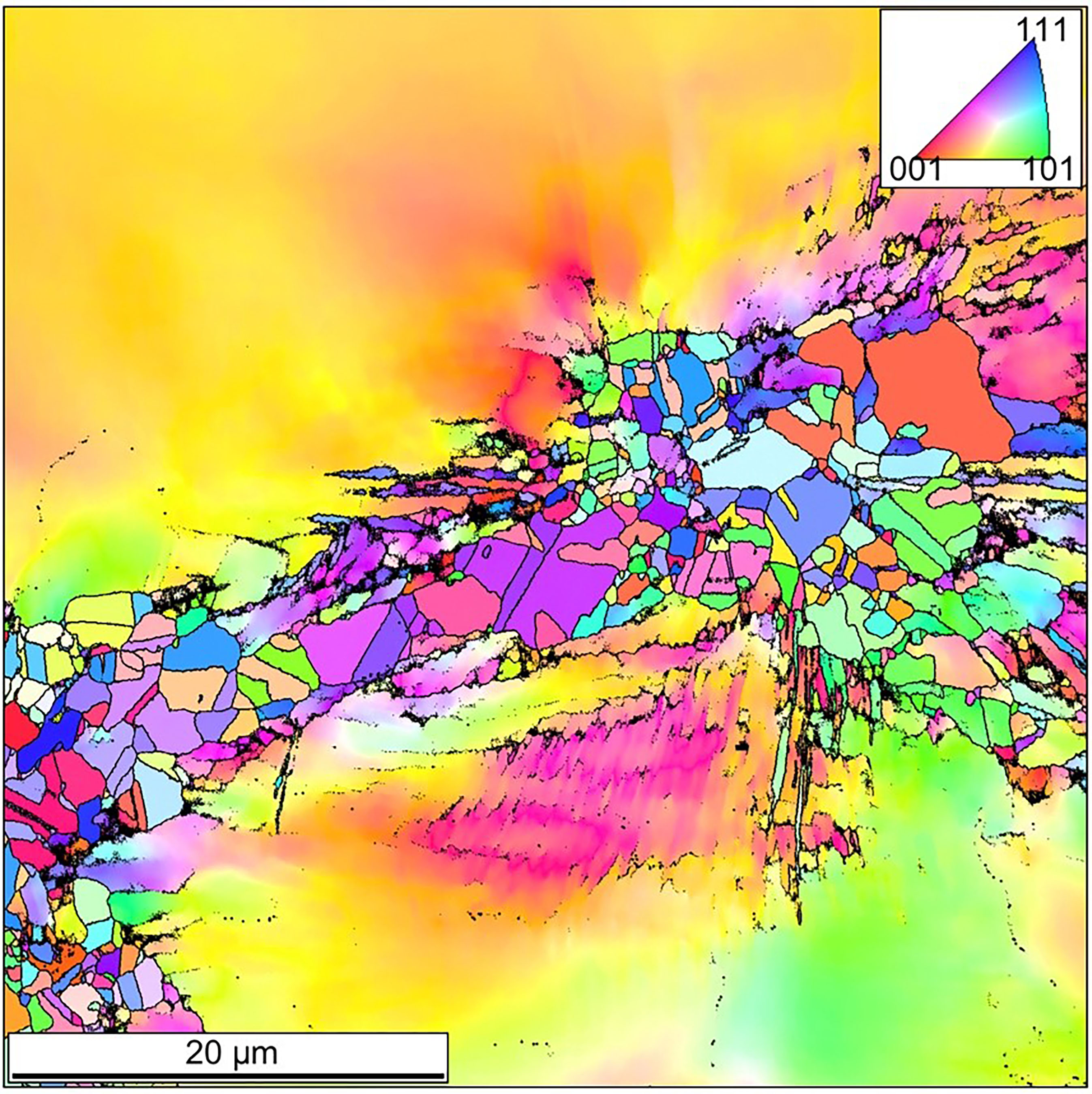WASHINGTON, June 23, 2020 — When a material is subjected to an extreme load in the form of a shock or blast wave, damage often forms internally through a process called spall fracture.
Since these types of intense events are rarely isolated, research is needed to know how damaged materials respond to subsequent shock waves — a piece of armor isn’t much use if it disintegrates after one impact.
To the surprise of researchers, recent experimentation on spall fracture in metals found that, in certain cases, there was an almost complete lack of damage with only a thin band of altered microstructure observed. Usually, under these sorts of conditions, the material would contain hundreds of small voids and cracks.
In an article for the Journal of Applied Physics, published by AIP Publishing, researchers from Los Alamos National Laboratory narrowed down exactly why the expected damage was missing.
“Conflicting hypotheses were suggested for the lack of damage. Was there some sort of strengthening occurring, so that damage never nucleated, or was the damage recompacted to a fully dense state by some other loading?” said author David Jones. “By splitting the experiment into two phases — damage formation and recompaction — we could determine which hypothesis was correct.”
Materials experiencing shock damage at high strain rates from a sudden impact will exhibit significantly different behavior compared to their response under standard, low-rate mechanical testing.
The researchers used gas-gun flyer-plate impact experiments to first damage samples, and then impact these samples a second time to see how the shock wave interacts with the damage field, which had not been done before. They found a shock stress of just 2 to 3 gigapascal actually recompacted a damaged copper target and created a new bond where the once broken surfaces were brought back together.
“This research, where careful experiments are used to isolate the strength and damage response of a material under shock loading, helps to reveal how microstructure plays a key role in dynamic response,” said Jones.
The authors hope the future of shock physics research will involve next-generation free electron X-ray lasers, a game-changing tool.
“Being able to image in real time these micrometer-scale, microsecond-duration damage events in metals will be a paradigm shift in shock physics diagnostics,” said Jones.
###
The article, “Shock recompaction of spall damage,” is authored by David Jones, Saryu Fensin, Benjamin Morrow, Daniel Martinez and Robert Hixson. The article will appear in the Journal of Applied Physics on June 23, 2020 (DOI: 10.1063/5.0011337). After that date, it can be accessed at https://aip.scitation.org/doi/10.1063/5.0011337.
ABOUT THE JOURNAL
The Journal of Applied Physics is an influential international journal publishing significant new experimental and theoretical results in all areas of applied physics. See https://aip.scitation.org/journal/jap.
###
Original post https://alertarticles.info
